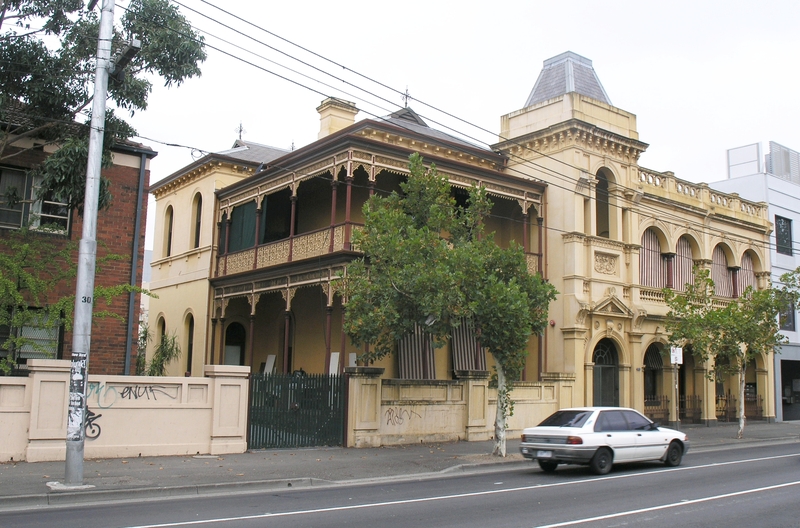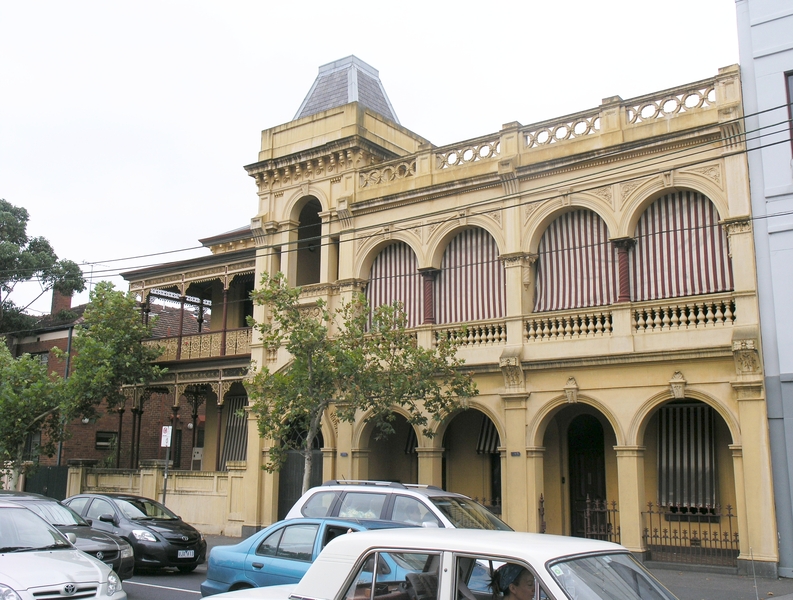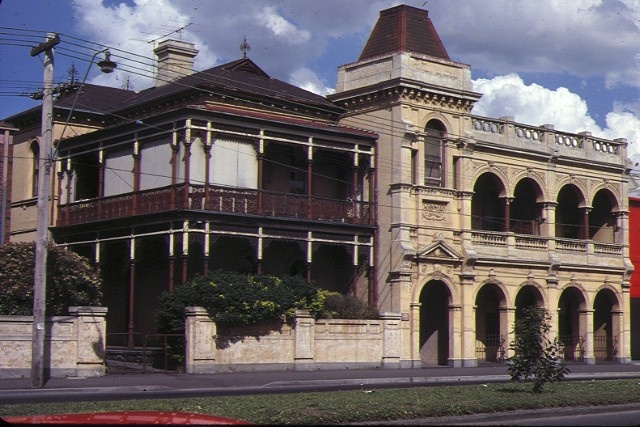URBRAE
171 HODDLE STREET RICHMOND, YARRA CITY
-
Add to tour
You must log in to do that.
-
Share
-
Shortlist place
You must log in to do that.
- Download report





Statement of Significance
What is significant?
Urbrae is situated on land that was subdivided from William Highett's 1839 crown grant. Three allotments were purchased by James P. Lind, a photographer, who combined them to form the present site and erected a two storey single fronted house. The medical men Thomas, James and William Boyd purchased the property in 1898. By 1901 the existing pair of semi-detached houses had been established. The original house was converted into a double fronted two storey arcaded residence and attached to a two storey house with return verandahs and an impressive tower over the entrance. The arcaded Italian renaissance-derived style of the front elevation is believed to be the work of the architect JAB. Koch who worked extensively in Richmond. The integrity of the pair of houses is excellent. An early decorative scheme remains in the entrance hall of the house on the left.
How is it significant?
Urbrae is of historical and architectural significance to the State of Victoria.
Why is it significant?
Urbrae is of historical significance as the residence of the Boyd family of noted medical practitioners. Dr Thomas Boyd was the government vaccinator while Dr William Boyd was an eminent pathologist. William lived here until his death in 1935. The substantial house provides some indication of the success of the family and of the social prominence of medical professionals in late 19th century Melbourne.
Urbrae is of historical significance as evidence of the process of suburban change during the 19th century. Richmond Hill, the location of Urbrae, became, like many elevated areas within Melbourne’s suburbs, the location for the houses of the wealthy, as the rest of Richmond became increasingly industrialised and inhabited by the working class. In the case of Urbrae, Lind’s original, modest house was converted to a more substantial residence, more befitting the location and respectability of its residents.
Urbrae is of architectural significance as an impressively sited (on the brow of Richmond Hill) late Victorian pair of semi-detached houses and for the quality of its Italian renaissance- style front elevation.
-
-
URBRAE - Permit Exemptions
General Exemptions:General exemptions apply to all places and objects included in the Victorian Heritage Register (VHR). General exemptions have been designed to allow everyday activities, maintenance and changes to your property, which don’t harm its cultural heritage significance, to proceed without the need to obtain approvals under the Heritage Act 2017.Places of worship: In some circumstances, you can alter a place of worship to accommodate religious practices without a permit, but you must notify the Executive Director of Heritage Victoria before you start the works or activities at least 20 business days before the works or activities are to commence.Subdivision/consolidation: Permit exemptions exist for some subdivisions and consolidations. If the subdivision or consolidation is in accordance with a planning permit granted under Part 4 of the Planning and Environment Act 1987 and the application for the planning permit was referred to the Executive Director of Heritage Victoria as a determining referral authority, a permit is not required.Specific exemptions may also apply to your registered place or object. If applicable, these are listed below. Specific exemptions are tailored to the conservation and management needs of an individual registered place or object and set out works and activities that are exempt from the requirements of a permit. Specific exemptions prevail if they conflict with general exemptions. Find out more about heritage permit exemptions here.
-
-
-
-
-
OLD MEN'S SHELTER
 Victorian Heritage Register H0945
Victorian Heritage Register H0945 -
ST HILDA HOUSE
 Victorian Heritage Register H0481
Victorian Heritage Register H0481 -
MOSSPENNOCH (MOSSPENNOCK)
 Victorian Heritage Register H0420
Victorian Heritage Register H0420
-
"1890"
 Yarra City
Yarra City -
"AMF Officers" Shed
 Moorabool Shire
Moorabool Shire -
"AQUA PROFONDA" SIGN, FITZROY POOL
 Victorian Heritage Register H1687
Victorian Heritage Register H1687
-
DIGHTS MILL SITE
 Victorian Heritage Register H1522
Victorian Heritage Register H1522 -
DUNROE
 Southern Grampians Shire
Southern Grampians Shire -
EMU BOTTOM
 Victorian Heritage Register H0274
Victorian Heritage Register H0274
-
-















